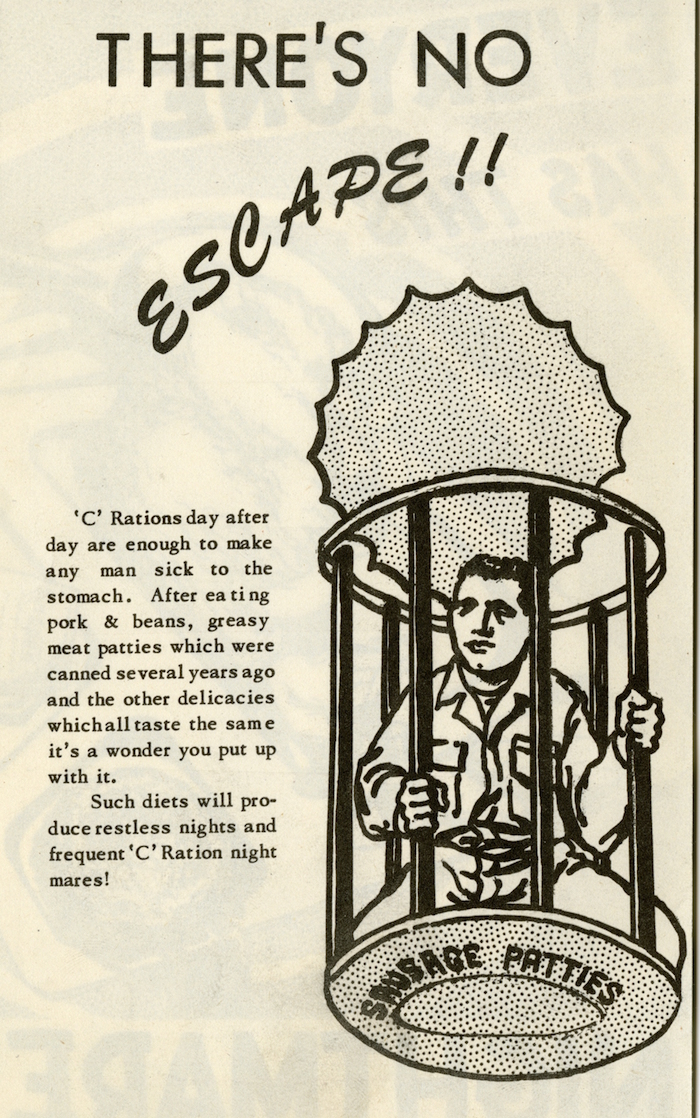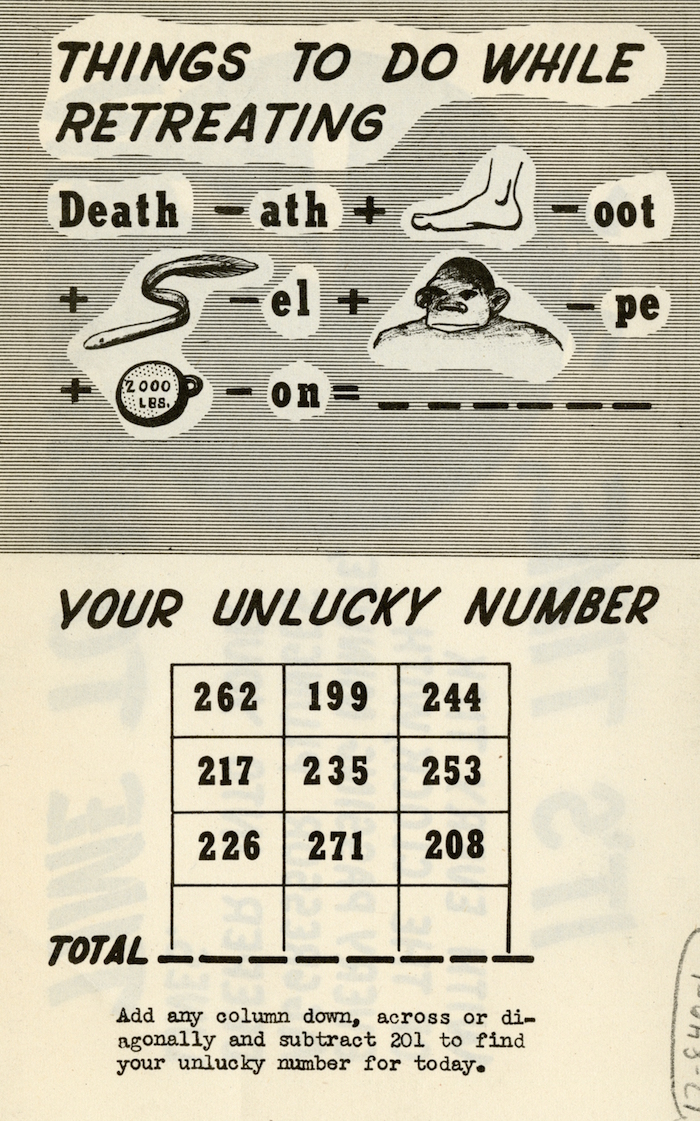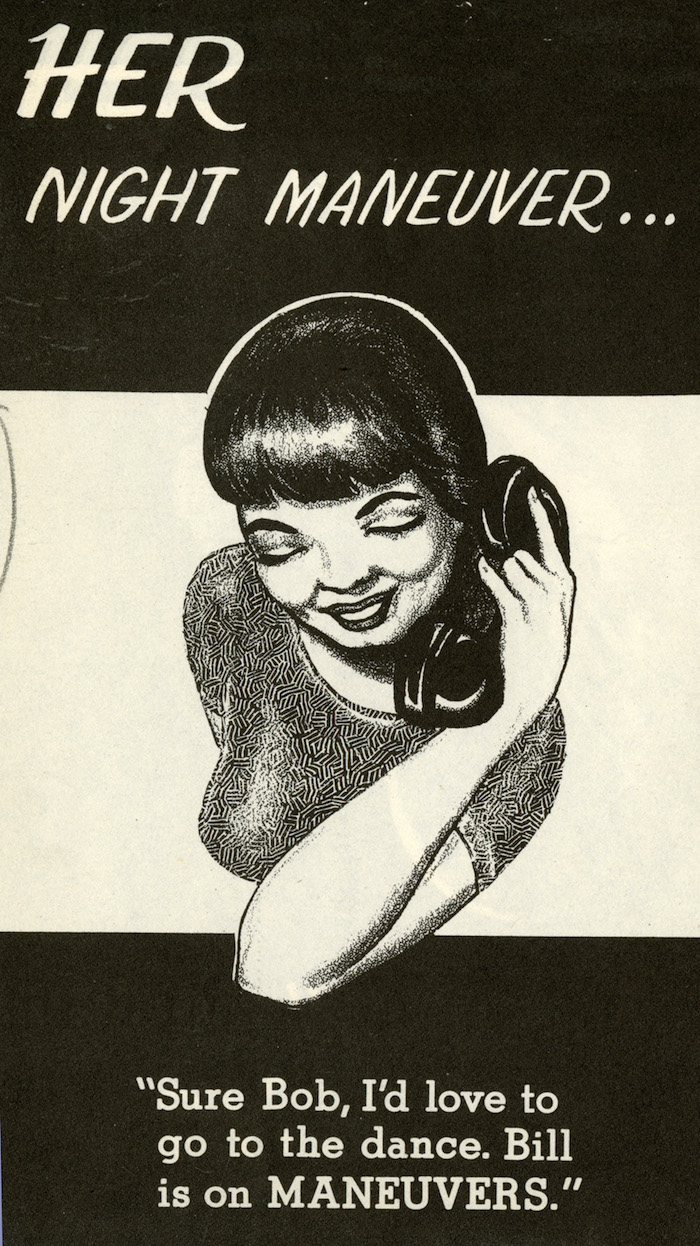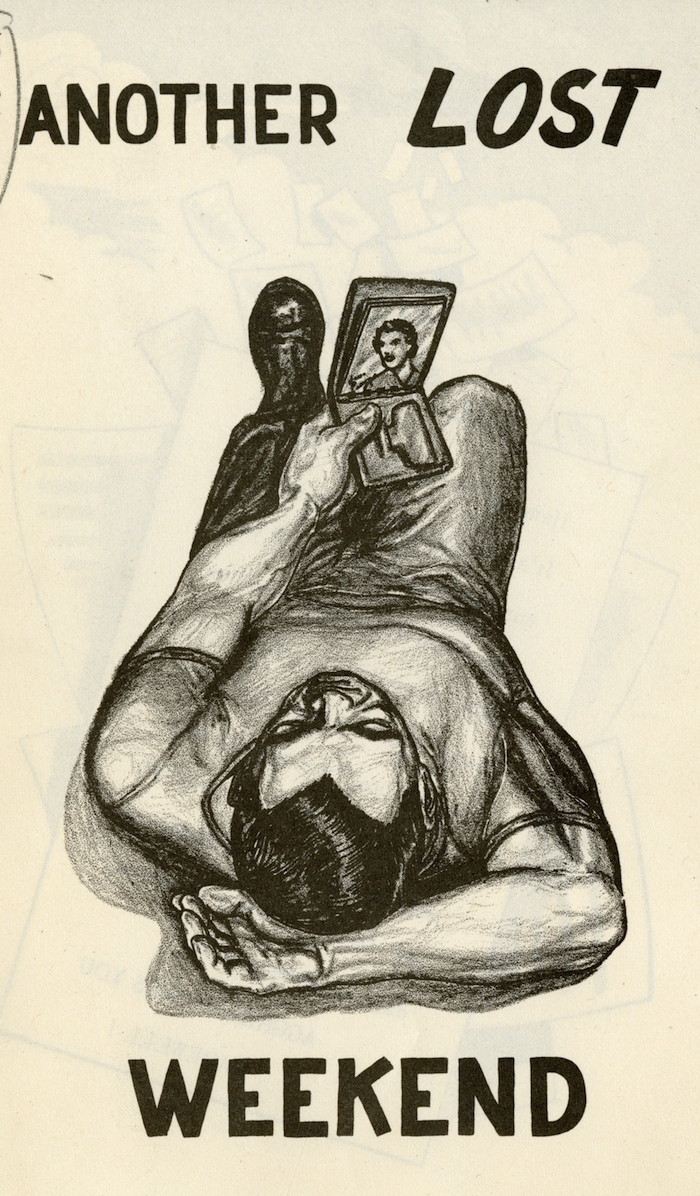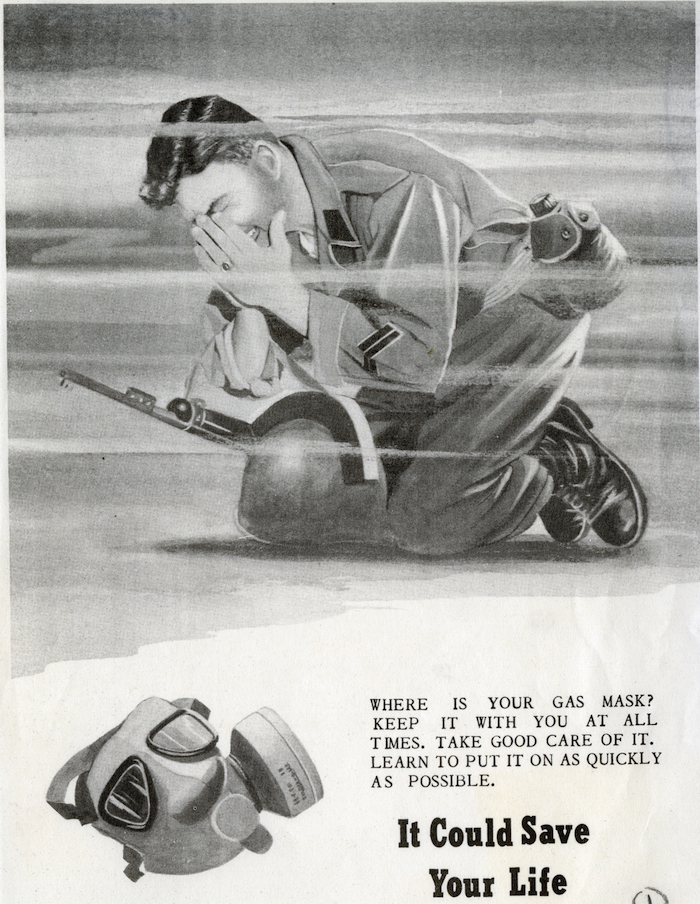
Under severe battle conditions a leaflet is just as formidable as a deadly weapon. In wartime, leaflets are designed to convey a message without artifice or conceit and used to undermine a battle-weary soldier’s morale. The variety discussed here is especially virulent when the troops are caught in prolonged engagements, and more susceptible to doubt and despair than to free thought. Given the anxiety of battlefield encounters, even the toughest soldier is psychologically vulnerable. So to train soldiers to withstand the presures, the United States Army (and military forces in general) conduct exercises that teach soldiers to resist emotional assault.
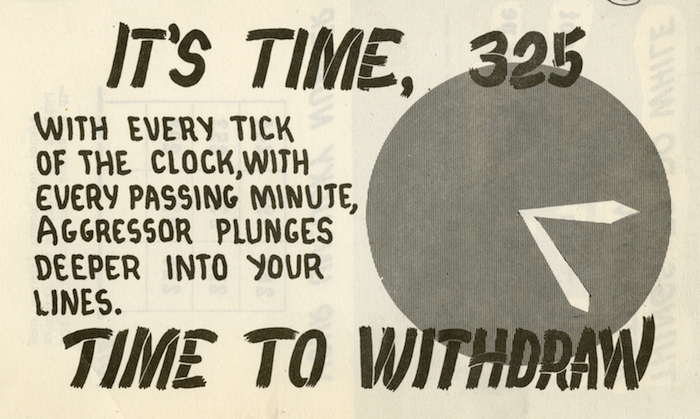
During the 1950s and '60s Cold War, when US defenses were on the ready, the Defense Department’s Psychological Warfare (PsyOps) Division produced simulated enemy leaflets that were routinely dropped from aircraft during field maneuvers in an effort to expose troops to the reality of what they might expect under real battle conditions. Crudely printed on cheap paper usually in black and white, the typography is competent but undistinguished, yet the imagery is suitably menacing. Illustrated in a pulp comic book style, the Aggressor is not given any explicit national characteristics, but has an alien demeanor—while seeming to be unthreatening.
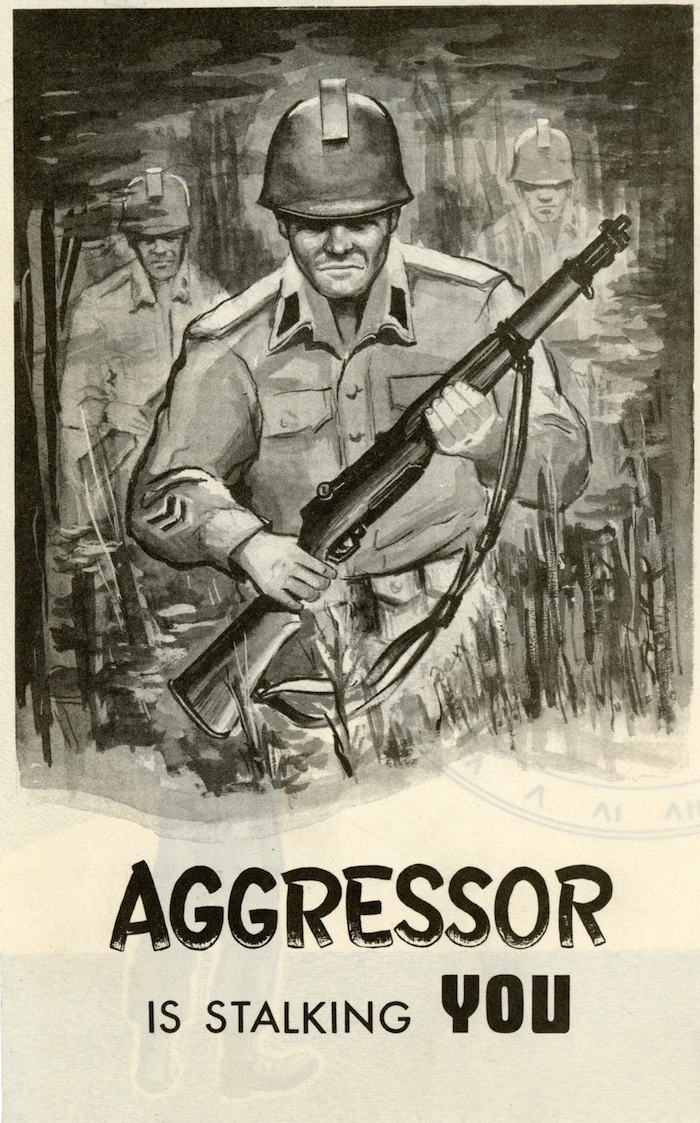
Military maneuvers are rarely a matter of life or death but they do test the mental and physical stamina of soldiers. These leaflets, and others like them, were designed to wreak havoc on psychologically weakened troops during a dangerous junction in warfare—that moment when the decision to fight or surrender must be made. Even in a relatively safe wargame environment there is a strong temptation to cave before collective hardships. As unconvincing as they may seem to those who are not involved, these unsophisticated leaflets had a devasting subliminal impact that military experts sought to quantify through intense simulations.
++++
